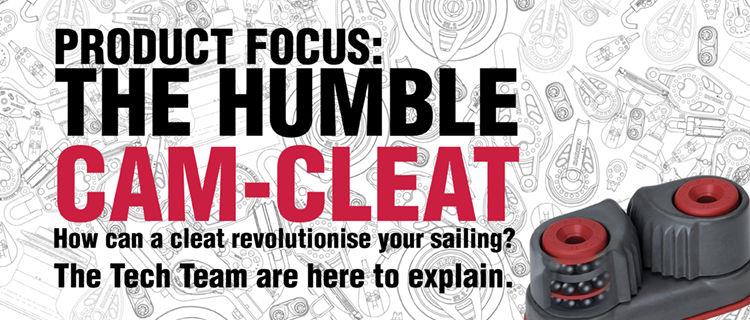
Harken Product Focus: The Cam-Cleat
by Alice Markham, Harken UK 11 Dec 2018 04:00 PST

Harken Cam-Cleat © Harken
With such a huge range of hardware out there, the Harken Tech Team would like to help untangle the different options available. Every month we will be producing a product focus article, giving advice on how to pick the right hardware for the job.
This month, we're focusing on cam cleats: whilst often overlooked, it is actually very important to have the right cleat for the job! Using the wrong cleats can result in imprecise sail trim and lines slipping or not un-cleating.
FUN FACT: There are twelve standard Cam-Matic cleats (150) on an AC45, some of which are used alongside X-Treme Angle Fairleads (375), for controlling the wing, gennaker and dagger-boards.
What makes Harken cleats work so well?
There are a few elements of the Harken design that differ from other cleats on the market:
- Firstly, it is the only cleat with three tiers of bearings which ensures a very stable but still low friction cam. As a result of the high-efficiency bearing system, a less powerful spring is required to engage the cam.
- The design of the teeth and shape of the cams are also unique: the cam shape means that regardless of the rope diameter or the angle the rope is pulled through the cleat, the same number of teeth on each cam will engage, which gives a very effective grip of the rope with no slip. The top of the cam is a V-shape to guide the rope into the cam.
It is easy to see just a cleat, but when all the small details of the design are brought together, the result is a cleat which engages with minimal line load – which is great in light winds, particularly for accurate sail trim – but also engages and releases brilliantly when you have maximum line load.
Most importantly, the line does not have to be moving to engage the cams: even with light line load the sheet can be lowered into the cam and the cleat opens and engages. In short, you are able to put the rope into the cleat exactly where you want it to be cleated, and un-cleat without compromising sail trim.
How do you decide which cleats and which accessories to use?
There are two different ranges of cleats in the Standard and Micro sizes:
- Carbo-Cams (Micro 471, Standard 365) are made of the same fibre-reinforced, UV-stabilised composite as our Carbo blocks, which is very light-weight. These cleats are ideal for control lines.
- The aluminium Cam-Matic cleats (Micro 468, Standard 150) are the best choice for higher loads and faster line speeds, meaning they work well for the spinnaker halyard and jib and spinnaker sheets, as well as the control lines which are constantly adjusted, like the kicker.
The accessories you need depends upon how the line will enter and exit the cleat:
- If the line is entering from above the height of the cleat or not from directly behind the cleat, a wire fairlead (Micro 475, Standard 298) can be used to align the entry angle of the rope.
- If your sheeting position in the boat relative to the cleat is not directly in line then an X-Treme Angle Fairlead (Micro 476, Standard 375) can be used to align the rope with the centre of the cams.
There is a huge variety of accessories available to set the height and alignment of the cleat to get the best performance, including wedges, risers and fairleads. If you are unsure which to use, the Tech Team at Harken UK are happy to provide advice!
TOP TIP: Do not overtighten your screws when fitting your cleats as this may crush the ball bearings and stop the cam of the cleat from moving freely. The rule of thumb for installation is to tighten the screw until the cam doesn't move freely, and then ease it off slightly. You should be about there!
Maintenance: Harken hardware is designed to work in harsh conditions with minimum maintenance. The materials selected were chosen because of their ability to perform in a salt water environment over a long period of time, and are also UV stabilised. Just make sure you wash every cleat with fresh water after sailing on the sea to prevent a build up of salt and grit within the cleat.